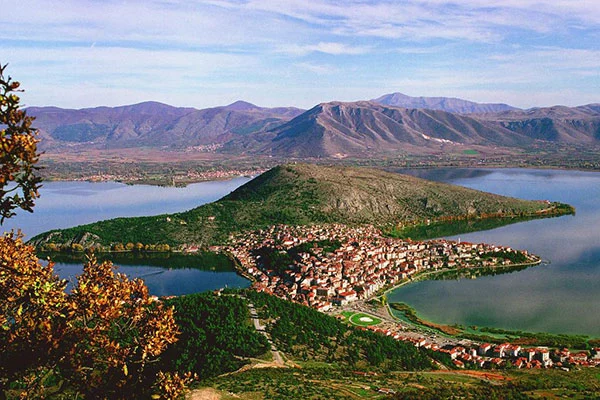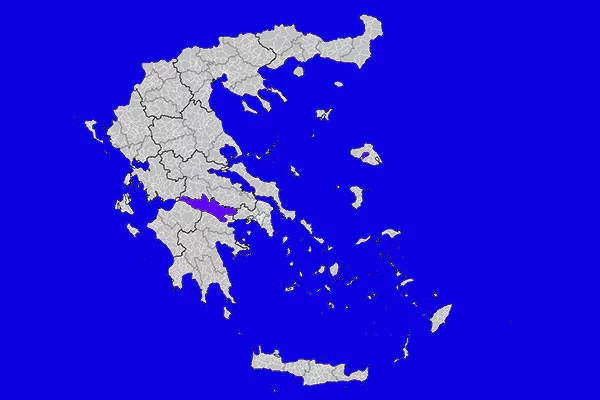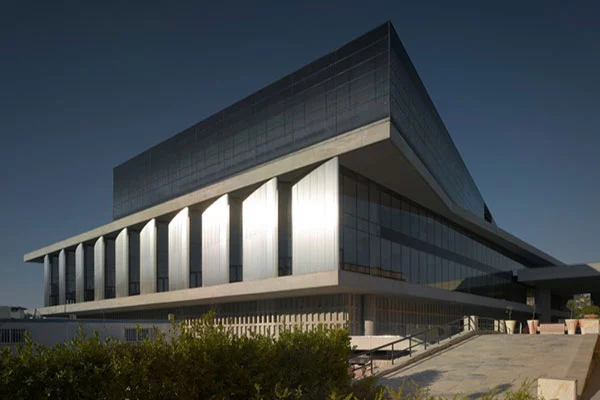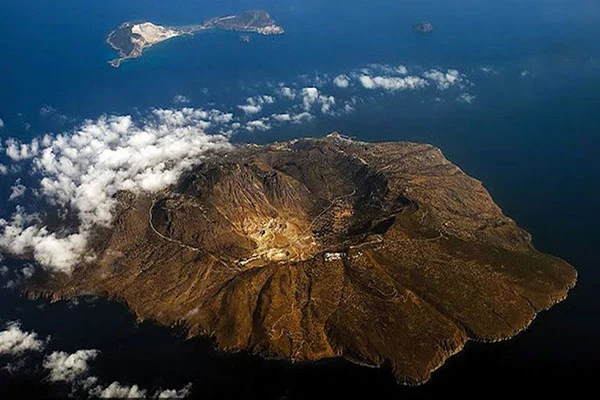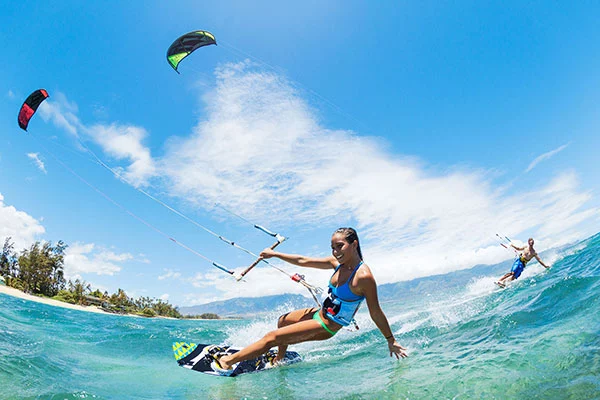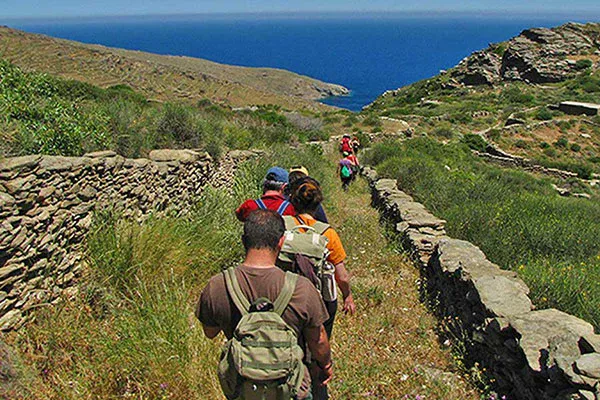Heraklion
Heraklion, built on the north coast of the island overlooking the Cretan Sea, is the largest city in Crete with 140,730 inhabitants and the fourth most populous municipality in the country with 173,993 inhabitants. It is the capital of the region, the largest urban, economic, commercial and scientific center of the island. It occupies a strategic geopolitical position in the southeastern Mediterranean basin, connecting three continents and many different cultures that have flourished over the centuries: Byzantine buildings stand next to Venetian public and private buildings and Ottoman structures. The city of Heraklion is famous for its resistance and heroism during the German invasion and the Battle of Crete (1941), was honored with the First Class War Cross.
The main economic sectors of the city are tourism, agriculture and trade. It has an industrial area 4 km southeast of the center. Heraklion also has one of the largest airports in Greece today, the airport "Nikos Kazantzakis", as well as a port with heavy shipping mainly to Piraeus and other islands. The city of Heraklion was named for the year 2017 as the fastest growing tourist area in Europe. During the 2004 Olympic Games, it was one of the Olympic Cities and hosted football tournament matches.
If you begin a walk around Heraklion, starting at the fishing harbour close to the Rocca al Mare, but is now known by its Turkish name, Koules. It has a mixed history; for centuries it was used as protection against invaders, as were the great city walls and ditches. These are among the longest city walls in Europe. With its huge dark hallways and cells, the fortress was also a prison to many Cretan rebels and those who broke the rules imposed by successive occupiers of Crete. Koules is built on two tiers and offers a commanding view of Heraklion from the battlements. The car free 25 August St. is directly opposite the Old Harbour and extends to Lion Square. It takes its name from a massacre of ‘martyrs' which occurred in 1898. Walking up the short hill, and passing the shops and tourist offices, we reach St. Titus' Cathedral, an impressive sight. Saint Titus, a fellow traveller of Saint Paul, preached the gospel in Crete during Roman rule and was martyred in Gortyn, where a 7th Century basilica stands in his memory. His church in Heraklion was built during the second Byzantine period, when it first served as the city's cathedral.
A little further and you discover the Venetian architecture of the Loggia which functioned as a club for the nobility to gather and relax. The Loggia is a wonderful example of Venetian building, unmistakeable with its semi-circular arches, it was built in the 16th century and was located in the Piazza dei Signori (Square of the Administrative Authorities). Today, the Loggia, decorated with sculptured coat of arms, trophies and metopes, houses part of the town-hall of Heraklion. The Loggia was awarded the Europa Nostra first prize in 1987 for the best renovated and preserved European monument of the year. St. Mark's Basilica, almost next door, is now the Municipal Art Gallery and often host to art and crafts exhibitions, almost always open to visit. Built in 1239 in the Piazza delle Biade (Square of Blades), it was at one time the Cathedral of Crete. The Basilica belonged to the reigning Duke, eventually becoming his burial place. In May 2006, the Basillica was host to the First International Conference on Ethics and Politics, featuring speakers from all over the world. You will welcome its cool, dignified interior and may begin to feel the great age of this city in its venerable walls.
The heart of Heraklion is the Morosini Fountain or, Liondaria in Greek or, more properly, Plateia Eleftheriou Venizelou, after Venizelos, Crete's greatest man of state.The decorated fountain is composed of eight cisterns and decorated with stone relief, depicting figures of Greek mythology, Nymphs, Tritons, sea monsters and dolphins, while the main basin is supported by four sitting lions balancing a circular bowl on their heads. It was left by Francesco Morosini, the Italian governor who had it built to commemorate Venetian success in bringing much needed water, through a brilliantly executed viaduct system from Mount Youchtas, to the centre of the city. Morosini was still in charge when the Turks captured the city.
Walk slowly through the Agora, the Market Street that runs alongside a shopping boulevard called 1866, after a Cretan uprising. Plateia Kornarou lies at the top of the market, with a lovely Venetian fountain of its own, the Bembo Fountain, probably the oldest, and it bears some very good decoration, although it has ceased to fount. The Bembo Fountain was built in 1588 by Venetian architect Zuanne Bembo. The Plateia itself is named after Vitsenzos Kornaros (1553 to approx.1614), composer of the epic poem Erotokritos, which is regularly performed around Crete, and still evokes pride in every Cretan heart. From here, it is close to Agios Minas Cathedral or, in the opposite direction, Freedom Square. From the top of the Market, turn right, and find the large square of Saint Katherine in which stands the dominating form of the cathedral.
The spacious Plateia Eleftherias is worth exploring, built in a crescent shape alongside the Archaeological Museum and close to Heraklion's municipal buildings and the main foreign Consulates. On the seaward side of the square is the entrance to St. George's Gate, used from Venetian times as a passage between the city and its port, the entrance is down stone steps, leading to an atmospheric dome-roofed chamber and the lower exit. Other Places of Interest are the Historical Museum of Crete, the medieval wall, the archeological site of
Knossos, one of the most important archeological sites in Europe and the archeological site of
Phaistos.
Names
The Arab traders from al-Andalus (Iberia) who founded the Emirate of Crete moved the island's capital from Gortyna to a new castle they called rabḍ al-ḫandaq (Castle of the Moat) in the 820s. This was hellenized as Chándax or Chándakas and Latinized as Candia, which was taken into other European languages: in Italian and Latin as Candia, in French as Candie, in English as Candy, all of which could refer to the island of Crete as a whole as well as to the city alone; the Ottoman name was Kandiye. After the Byzantine reconquest of Crete, the city was locally known as Megalo Kastro (Big Castle) and its inhabitants were called Kastrinoi (castle-dwellers). The ancient name Iraklion was revived in the 19th century and comes from the nearby Roman port of Heracleum (Heracles's city), whose exact location is unknown. English usage formerly preferred the classicizing transliterations "Heraklion" or "Heraclion", but the form "Iraklion" is becoming more common.
History
History connects the place with antiquity and Europe. It was to Crete, according to Greek mythology, that Zeus, the Father of Gods, brought the beautiful young virgin Europa with whom he had fallen in love. Their romantic union gave birth to their son, Minos, whose name was borrowed by all the subsequent kings of Crete as well as the historic civilization.During the Minoan era, Heraklion was probably the port for Knossos, the cradle of Minoan civilization (2000-1450 B.C.). References to Heraklion were made by ancient historians such as Strabo, who in his writings of the first century A.D. refers to the port of Knossos as Herakleium, obviously so named in honour of Hercules (Heracles) who had come to Crete to capture a wild bull and thus fulfill the seventh of his Twelve Labours.The most important landmarks in the history of the city are the following: During the 9th century A.D. the Arabs occupied Crete and founded at the site of Heraklion a new city called Rabdh al Khandak (Castle of the ditch); the name Handakas is still used by some of the older residents of Heraklion. In the 10th century the Byzantines took control of the island and managed to stay in power till the beginning of the 13th century.
During the 14th century, the city fell into the hands of the Venetians. The Venetian period lasted four and a half centuries and it was a period of great progress for the city in terms of development in areas such as trade and architecture, literature and art. The world-famous painter Dominicos Theotokopoulos (El Greco) was born in Heraklion where he first worked. Many Venetian monuments still exist in Heraklion, such as the old walls which surround the old part of the city, the port fortress (Koules), the Loggia, Morozini’s fountain etc. Following the siege of Heraklion by the Turks (which started in 1648 and lasted for about 25 years) the Venetians were forced to surrender the city to the Turks. Cretans rose in revolt many times against the Ottoman Turks, in 1770, 1821, 1866 and 1895. In 1898 the island of Crete gained its autonomy from the Ottoman Empire and in 1912, it joined Greece.
The Archaeological Museum of Heraklion boasts exhibits from neolithic findings (5,000 B.C.) to Roman remains (4th century A.D.) and it is regarded as one of the best of its kind in the world. There is also a Historical and Ethnographic Museum with exhibits from the post-Roman period of Crete, the Byzantine period, the Venetian and Turkish periods and the Cretan civilization of the 20th century.
.jpg)
 Koules Castle or Rocca al Mare
Koules Castle or Rocca al Mare 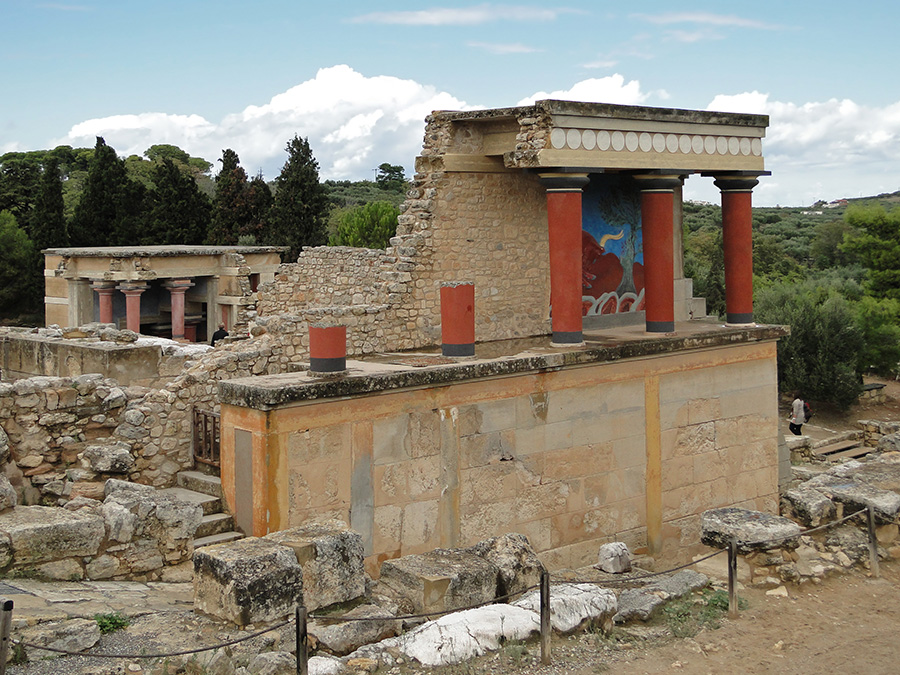 Knossos
Knossos

